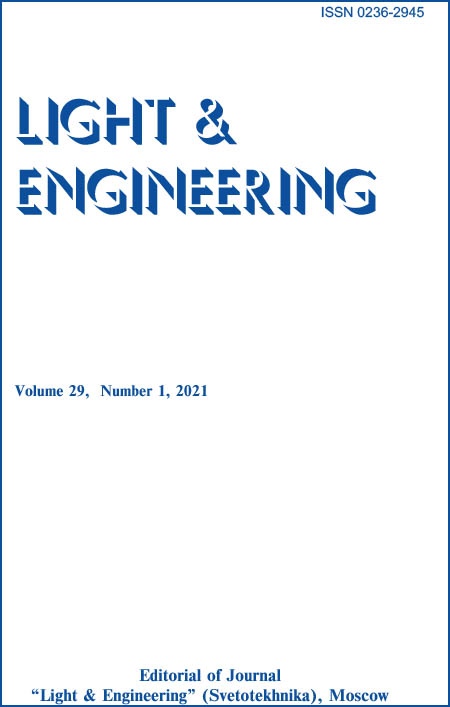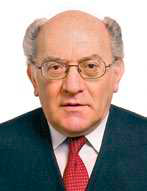Content

Light & Engineering 29 (1)
Volume 29Date of publication 02/27/2021
Pages 4–10
Abstract:
For centuries, light has been produced to enable the human visual system to operate but, today, light is being used for an increasing number of non-visual, technical purposes. Examples include plant growth, remote sensing, electricity generation, and communication. This paper discusses the theoretical foundation of such technical applications of light and shows that it is completely identical to the fundamentals of lighting. The foundation is the theory of the light field, which is generated by the interaction of the radiation field with a quadratic (energy) receiver. Within its range of applicability, the theory of the light field is complete and closed. As a result, the light field provides a unified theoretical base for lighting systems and the technical application of light. This creates the basis for combining them into a single section of science and technology, which will ensure their effective development and application.
References:
1. Aizenberg J.B., Budak V.P. The science of light engineering, fields of application and theoretical foundations // Light and Engineering, 2018, Vol. 26. pp. 4–6. 2. Aizenberg JB, Budak VP. Light science is not only science of lighting: theoretical bases and application area // Proceedings of the CIE, 2019, Vol. 1, pp. 1315–1318. 3. Bouguer P. Optical Treatise on the Gradation of Light. Translated, with introduction and notes by W.E. Knowles Middleton. – Toronto: University of Toronto Press, 1961. 4. Lambert J. Photometria sive de mensura et gradibus luminis, colorum et umbrae. Lamberts Photometrie // Ostwald’s Klassiker der Exakten Wissenschaften. No.31, 32, 33. Leipzig: Engelmann, 1892. 5. Kepler J. Ad Vitellionem paralipomena. – Frankfurt: C. Marnium and Hӕredes Aubrii, 1604. 6. Gershun A.A. The Light Field. Translated by P. Moon and G. Timoshenko // Journal of Mathematics and Physics, 1939, Vol. 8, pp. 51–151. 7. Blondel A. Sur les unités photométriques// Journal of Physics: Theories and Applications, 1897, Vol. 6, pp. 187–193 8. Rosa E.B. Photometric units and nomenclature// Bulletin of the Bureau of Standards, 1910, Vol. 6, pp. 543–572. 9. Rozenberg G.V. The light ray (contribution to the theory of the light field) // Soviet Physics Uspekhi 1977. Vol. 20. P. 55–80 10. Lifshitz E, Landau L. The Classical Theory of Fields (4th ed). – Oxford: Butterworth-Heinemann, 1980. 11. Beer A. Grundriss des photometrischen Calcüles. – Braunschweig: Friedrich Vieweg und Sohn, 1854. 12. Kirchhoff G. Vorlesungen über mathematische Physik. Zweiter Band. Mathematische Optik. – Leipzig: Druck und Verlag von B.G. Teubner, 1891. 13. Sommerfeld A., Runge J. Anwendung der vektorrechnung auf die grundlagen der geometrischen optik // Annalen der Physik, 1911. B.35. S.289. 14. Born M, Wolf E. Principles of optics: Electromagnetic theory of propagation, interference and diffraction of light. – Oxford: Pergamon Press, 1968. 15. Apresyan L.A., Kravtsov Yu.A. Radiation Transfer: Statistical and Wave Aspects. – London: Gordon and Breach Publishers, 1996. 16. Budak V.P., Efremenko D.S., and Smirnov P.A. Fraunhofer diffraction description in the approximation of the light field theory // Light & Engineering, 2020. Vol. 28, No. 5, P. 25–30 17. Sillion F., Puech C. Radiosity and Global Illumination. – San-Francisco: Morgan Kaufmann, 1994.
Keywords
- light field
- wave field
- ray approximation
- photometry
- fundamentals of lighting technology
- visual and non-visual action of light
Recommended articles
Evaluation of Lighting Quality Based On Visibility L&E, Vol.31, No.4, 2023
Scaling Of Visual Tasks Sensations From Human Centric Lighting Point Of View L&E, Vol.30, No.2, 2022
Changing MacAdam Ellipses with Adaptation L&E, Vol.31, No.4, 2023


